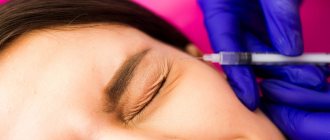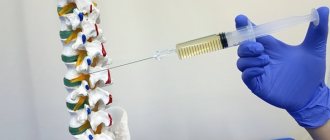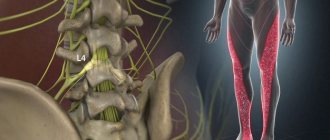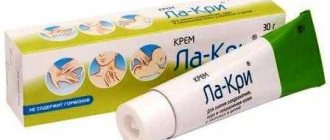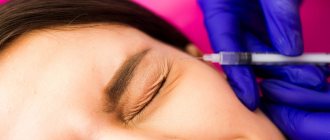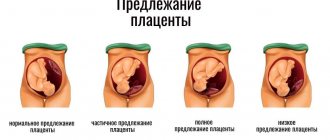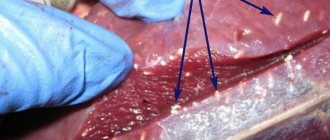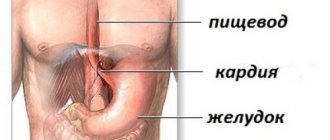- Why does pressure change when body position changes?
- Signs of orthostatic hypotension
- Tachycardia due to orthostatic hypotension
- When does orthostatic hypotension occur?
- Diagnostics
- Dysregulation of pressure in autonomic dysfunction
- Signs of autonomic dysfunction
- Treatment of the disease
- Medications
Orthostatic hypotension is also called postural hypotension.
The name "orthostatic collapse" is also used. This condition is characterized by a drop in blood pressure (BP) when a person assumes an upright position. This diagnosis is established if systolic pressure drops by 20 mmHg or more, and diastolic pressure by 10 mmHg or more, and this condition persists for three or more minutes. Elderly people, patients with neurological diseases, and people who have been on bed rest for a long time are most susceptible to pathology. According to statistics, 20% of older people, including those with high blood pressure, are diagnosed with orthostatic hypotension.
You should be aware that postural hypotension is not classified as a separate disease. This is a pathological condition that indicates a circulatory disorder. This phenomenon occurs against the background of various diseases and can occur periodically or be permanent. If there are signs of postural hypotension, it is necessary to identify its cause and eliminate it. This condition negatively affects the functioning of the heart and contributes to the development of cardiovascular diseases.
Why does pressure change when body position changes?
When a person stands up abruptly, a large amount of blood enters the vessels of the lower extremities. Its volume can reach one liter. In this case, venous return decreases and cardiac output decreases, which causes hypotension. This is a normal physiological process that occurs even in healthy people.
The sympathetic nervous system is responsible for normalizing blood pressure when changing body position. A person’s pulse reflexively quickens and vascular tone increases. Thanks to this, the pressure immediately returns to normal. In healthy people, when taking an upright position, the pathological signs characteristic of hypotension do not appear or go almost unnoticed.
If a person remains in a lying position for a long time, due to natural compensation mechanisms, the production of vasopressin increases. Its effect helps increase the volume of circulating blood.
Lessons and recommendations
The decrease in systolic blood pressure is assumed to be 20 mm Hg. Art. the diastolic blood pressure is reduced by 10 mmHg. Art. at intervals up to 3 min. After getting up, confirm the diagnosis of orthostatic hypotension. Anamnesis, physical examination and laboratory investigations focus on excluding non-neurological causes (for example, hemorrhage, anemia, cardiovascular and endocrine disorders) and identifying signs of primary autonomic degenerative diseases. their impairment and autonomic peripheral neuropathies. With a more precise diagnosis, there is a need for additional restraints, assessment of autonomic functions and neuroimaging.
In a typical clinical presentation, the absence of an obvious cause of symptoms and the normal results of neurological stimulation allow one to think about the diagnosis of isolated autonomic failure. At the same time, since orthostatic hypotension may be the first manifestation of multisystem atrophy or autonomic neuropathy, care for diseases is no longer principled.
Reversible causes of orthostatic hypotension (sedation during antihypertensive therapy) should also be taken into account. Patients should be counseled on non-pharmacological strategies for symptom management if symptoms continue to subside, including low doses of fludrocortisone (0.05–0.1 mg per dose). If there is an effect, an α-adrenergic agonist is added before treatment (for example, midodrine with an initial dose of 2.5 mg 2-3 times a day, gradually increasing to 10 mg 3 times a day), which is not taken at intervals of 4 years before Walking before bed . If other agents are required. Ailments can be managed on an AT basis, monitored regularly and identified all the symptoms that appear when placed in a supine or vertical position or after sitting.
Prepared by Yuriy Matvienko
Signs of orthostatic hypotension
Pathology manifests itself:
- severe weakness;
- dizziness;
- impaired coordination of movements, loss of balance;
- short-term visual impairment.
If symptoms are severe, the patient may fall due to loss of balance. In some people, convulsions are added to these symptoms. As a rule, the manifestations of pressure fluctuations are more pronounced after a heavy meal or physical activity.
The duration of symptoms depends on the severity of the condition. In some patients, signs of blood pressure dysregulation last for several minutes; for others, everything goes away in seconds. In severe cases, the patient has to take a horizontal position, as standing he feels bad.
Heat stroke and hyponatremia
Exertional heat stroke (EHS) is characterized by dysfunction of the central nervous system, which may manifest as collapse or syncope associated with an increase in core body temperature (>400 C) caused by exercise (13, 14). Exercise hyponatremia (EH) is a potentially life-threatening condition characterized by decreased serum sodium (<135 mmol/L) and changes in mental status. Athletes with HFN present with actual syncope, confusion, or disorientation, but with changes in serum sodium concentration (15).
HFN and PHFN may be a cause of collapse in endurance sports, but they are associated with abnormal vital signs/symptoms and should be suspected and ruled out before diagnosing HFN. This review focuses on CFN, its mechanism and treatment; therefore, TUFN and GFN will not be discussed further.
Tachycardia due to orthostatic hypotension
Patients may experience a significant increase in heart rate. This phenomenon is called postural tachycardia. The heart rate increases to 120 or more beats per minute. If a person’s pulse accelerates by more than 30 beats when changing body position, then this is also postural tachycardia.
In some patients, increased heart rate is accompanied by dizziness and weakness, but the pressure is reduced slightly or remains normal. Experts still have not figured out what causes this condition.
Causes of neurogenic orthostatic hypotension
Causes of neurogenic orthostatic hypotension include disease in both the central and peripheral autonomic nervous systems. Orthostatic hypotension in such disorders is often accompanied by autonomic dysfunction of varying degrees of importance in other organ systems (including the cervix, intestines and organs).
The primary degenerative disorders of the autonomic nervous system are multiple system atrophy (Shay-Drager syndrome), Parkinson's disease, dementia with Lewy bodies and isolated autonomic failure. These disorders can often lead to a complex group of synucleinopathies, the fragments of which reveal alpha-synuclein - a small protein that is deposited mainly in the cytoplasm of neurons, as well as in glia. The characteristic signs of the names of the disorders are shown in Table 1.
Peripheral autonomic dysfunction may also accompany peripheral neuropathies with loss of fibres, which is avoided in diabetes, amyloidosis, immune nephropathies, spasmodic sensory, autonomic and inflammatory neuropathies (div. Table 2). More often, orthostatic hypotension is associated with peripheral neuropathies that occur due to vitamin B12 deficiency, neurotoxins, infections (for example, SAIDs) and porphyria.
When does orthostatic hypotension occur?
The cause of the pathology is considered in the context of the patient’s age, his state of health, and past illnesses. Acute postural hypotension can be caused by:
- hypovolemia - a condition in which the body lacks sodium and the water-electrolyte balance is disturbed;
- taking medications;
- long periods of lying down;
- decreased adrenal function.
If the pathology is chronic, the causes may be age-related changes and various disorders in the functioning of the autonomic nervous system. If the patient regularly takes medications, he may experience side effects, which are manifested by a decrease in blood pressure.
Experts included postprandial orthostatic hypotension into a separate category. It appears after the patient eats a large amount of foods high in carbohydrates. The pancreas produces a lot of insulin, and blood accumulates in the gastrointestinal tract.
Signs and symptoms
Some people with OH may have no noticeable symptoms despite a sharp drop in blood pressure when standing up from a lying position. When symptoms occur, they can vary greatly from person to person. Common symptoms of orthostatic hypotension may include:
- dizziness;
- depression;
- general weakness;
- bowed legs;
- nausea;
- blurred vision;
- fatigue;
- headache.
Additional symptoms of orthostatic hypotension may include chest pain (angina), head and neck pain (often affecting the neck and shoulders), and cognitive decline, such as difficulty concentrating.
Sufferers may experience temporary loss of consciousness or “syncope,” a condition known as syncope. Fainting may develop gradually or suddenly.
A serious complication of OH is the risk of falling, which can lead to physical injury such as a broken hip or other bones. The persistent drop and rise in blood pressure associated with hypertension has also been identified as a risk factor for stroke and other cardiovascular diseases.
Symptoms of OH while standing are aggravated by elevated environmental temperatures, such as hot weather, hot showers, hot tubs, or elevated body temperature. OH is often more widespread and more severe in the morning. Some people with neurogenic orthostatic hypotension (NOH) develop postprandial hypotension, which is defined as the development or worsening of hypotension approximately 30 minutes to 2 hours after eating, especially large meals high in carbohydrates.
Some people with NOH may also have high blood pressure when lying on their back. Hypertension in the supine position complicates treatment options for patients.
Diagnostics
The main condition for eliminating pathology is determining its exact cause. The patient is prescribed:
- electrocardiogram;
- blood test for electrolytes, glucose levels, creatinine;
- analysis of thyroid hormones;
- examination by a neurologist.
When a patient takes medications, he is offered temporary withdrawal, if possible, or a reduction in the dosage of the drug. If the symptoms of orthostatic hypotension disappear, one can judge the medicinal cause of the pathology.
Links[edit]
- Arnold, Amy S.; Raj, Satish R. (December 2021). "Orthostatic hypotension: a practical approach to research and treatment". Canadian Journal of Cardiology
.
33
(12):1725–1728. DOI: 10.1016/j.cjca.2017.05.007. PMC 5693784. PMID 28807522. - » Orthostatic hypotension » in Dorland's Medical Dictionary
- “Orthostatic Hypotension Information Page | National Institute of Neurological Disorders and Stroke". www.ninds.nih.gov
. Retrieved March 26, 2021. - Hase Y, Polvikoski TM, Firbank MJ, Craggs LJ, Hawthorne E, Platten S, Stevenson W, Deramecourt V, Ballard S, Kenny RA, Perry RH, Ince R, Carare RO, Allan LM, Horsburgh K , Kalaria RN (January 2020). "Pathological changes in small vessel diseases in neurodegenerative and vascular dementia, accompanied by autonomic dysfunction." Brain pathology
.
30
(1): 191–202. DOI: 10.1007/s10072-014-1686-8. PMID 31357238. - Sambati L, Calandra-Buonaura G, Poda R, Guaraldi R, Cortelli R (June 2014). "Orthostatic hypotension and cognitive impairment: a dangerous association?". Neurol. Sci
.
35
(6):951–7. DOI: 10.1007/s10072-014-1686-8. PMID 24590841. - Kasper DL, Fauci AS, Houser SL, Longo DL, James DL, Loscalzo J (2015). Harrison's Principles of Internal Medicine
.
2
(19th ed.). New York: McGraw-Hill Medical Publishing Division. item 2639. ISBN 978-0-07-180215-4. - Sim M, Hudon R (October 1979). "Acute intermittent porphyria associated with postural hypotension". Journal of the Canadian Medical Association
.
121
(7):845–6. PMC 1704473. PMID 497968. - Jump up
↑ Robertson D, Garland EM (September 2003).
"Dopamine beta-hydroxylase deficiency". In Adam MP, Ardinger HH, Pagon RA, Wallace SE, Bean LJ, Stephens K, Amemiya A (eds). GeneReviews
. University of Washington, Seattle. PMID 20301647 - via NCBI Bookshelf. - “What causes hypotension? -" . National Heart, Lung, and Blood Institute (NHLBI)
. US National Institutes of Health. Retrieved March 27, 2017. - Christou GA, Kiortsis DN (March 2017). "The influence of body weight status on orthostatic intolerance and susceptibility to noncardiac syncope." Obesity Reviews
.
18
(3): 370–379. DOI: 10.1111/obr.12501. PMID 28112481. - Jiang W, Davidson JR (November 2005). "Antidepressant therapy in patients with coronary heart disease." American Heart Journal
.
150
(5):871–81. DOI: 10.1016/j.ahj.2005.01.041. PMID 16290952. - Delini-Stula A, Bayera D, Kohnen R, Laux G, Philipp M, Scholz HJ (March 1999). “Adverse changes in blood pressure during naturalistic treatment with moclobemide, a reversible MAO-A inhibitor—results from a surveillance study.” Pharmacopsychiatry
.
32
(2): 61–7. DOI: 10.1055/s-2007-979193. PMID 10333164. - Jones RT (November 2002). "Effects of Marijuana on the Cardiovascular System." Journal of Clinical Pharmacology
.
42
(S1): 58S – 63S. DOI: 10.1002/j.1552-4604.2002.tb06004.x. PMID 12412837. - Narkiewicz K, Cooley RL, Somers V.K. (February 2000). "Alcohol increases orthostatic hypotension: consequences of alcohol-related syncope". Circulation
.
101
(4):398–402. DOI: 10.1161/01.CIR.101.4.398. PMID 10653831. - Shea MJ, Thompson AD. "Orthostatic hypotension". Merck Manual
. - Idiopathic orthostatic hypotension and other autonomic failure syndromes
in eMedicine - "Measuring supine and standing blood pressure: a quick guide for medical personnel". RCP London
. 2017-01-13. Retrieved September 23, 2021. - "Provocation of hypotension during head-up tilt testing in subjects without a history of syncope or presyncope". Circulation
.
92
(1):54–58. July 1, 1995. doi: 10.1161/01.CIR.92.1.54 - via ahajournals.org (Atypon). - Bradley JG, Davis K (December 2003). "Orthostatic hypotension". American family physician
.
68
(12):2393–8.CS1 maint: uses the authors parameter (link) - ^ a b c d
Wieling W, Krediet CT, van Dijk N, Linzer M, Tschakovsky ME (February 2007).
"Primary orthostatic hypotension: a review of a neglected condition." Clinical Science
.
112
(3):157–65. DOI: 10.1042/CS20060091. PMID 17199559. - ^ a b c d e f g h
Moya A., Sutton R., Ammirati F., Blanc J. J., Brignole M., Dame J. B., Deharo J. C., Gajek J., Jesdal K. , Crane A., Massin M., Pepi M., Pezavas T., Ruiz Granell R., Sarasin F., Ungar A., van Dijk J. G., Walma E. P., Wieling V. (November 2009 .).
"Recommendations for the diagnosis and treatment of syncope (2009 version)". European Heart Journal
.
30
(21): 2631–71. DOI: 10.1093/eurheartj/ehp298. PMC 3295536. PMID 19713422. - ^ a b
Gibbons CH, Freeman R (July 2006).
"Delayed orthostatic hypotension: a common cause of orthostatic intolerance." Neurology
.
67
(1):28–32. DOI: 10.1212/01.wnl.0000223828.28215.0b. PMID 16832073. - ^ a b
Izkovic A., Gonzalez Malla S., Manzotti M., Catalano N. N., Guyatt G. (September 2014).
"Midodrine for the treatment of orthostatic hypotension and recurrent reflex syncope: a systematic review." Neurology
.
83
(13):1170–7. DOI: 10.1212/WNL.0000000000000815. PMID 25150287. - Jump up
↑ Logan IC, Witham MD (September 2012).
"Efficacy of treatment for orthostatic hypotension: a systematic review". Age and Aging
.
41
(5):587–94. doi:10.1093/aging/afs061. PMID 22591985. - Romero-Ortuno R, Kogan L, Foran T, Kenny RA, Fan CW (April 2011). "Continuous noninvasive measurements of orthostatic blood pressure and their association with orthostatic intolerance, falls, and frailty in older adults" (PDF). Journal of the American Geriatrics Society
.
59
(4): 655–65. DOI: 10.1111/j.1532-5415.2011.03352.x. HDL: 2262/57382. PMID 21438868. - Ricci F, Fedorovsky A, Radico F, Romanello M, Tatasciore A, Di Nicola M, Zimarino M, De Caterina R (July 2015). "Cardiovascular morbidity and mortality associated with orthostatic hypotension: a meta-analysis of prospective observational studies". European Heart Journal
.
36
(25): 1609–17. DOI: 10.1093/eurheartj/ehv093. PMID 25852216. - Rawlings A, Juraschek S, Heiss G, Hughes T, Mayer M, Selvin E, Sharrett AR, Windham BG, Gottesman R (March 2021). Orthostatic hypotension is associated with 20-year cognitive decline and incident dementia: the Atherosclerosis Risk in Communities (ARIC) Study
(PDF). Epidemiology and Prevention / Lifestyle and Cardiometabolic Health, Scientific Sessions 2021. Portland, OR. Archived from the original (PDF) on March 15, 2021. Retrieved March 14, 2021.
Dysregulation of pressure in autonomic dysfunction
A common cause of postural hypotension is disturbances in the functioning of the autonomic nervous system. It is responsible for regulating blood pressure, heart rate, maintaining body temperature and electrolyte balance, and the processes of bowel and bladder emptying.
To determine pathological conditions in the functioning of the autonomic nervous system, a tilt test is used. This examination is carried out using special equipment, thanks to which it is possible to simulate the conditions of maximum venous outflow. The technique is informative and consists of several stages:
- After a night's sleep, the patient is placed on a table with a lifting mechanism. This device is called an orthostatic table. It is equipped with a body strap.
- Next, the patient is given an intravenous catheter to supply drugs that can provoke gasovagal symptoms: nausea, decreased blood pressure, dizziness, loss of consciousness. The combination of such signs is called neurocardiogenic syncope.
- First, the subject spends a quarter of an hour in a horizontal position, then the table is raised to a vertical position. Within 45 minutes, the doctor observes changes in blood pressure, pulse, and other indicators.
The tilt test is most often performed on young people. Older patients are referred for such examination if other types of diagnostics are uninformative and there are no contraindications. These include severe cardiovascular diseases in the acute stage.
Cardiac monitors are also used to assess the functions of the autonomic nervous system.
Diagnostic assessment
In patients who suffer from orthostatic hypotension, it is necessary to exclude dehydration and gastric hemorrhage, and also consider the possibility of other causes. These include drugs (for example, antihypertensive agents or antidepressants), decreased cardiac output (for example, constrictive pericarditis, cardiomyopathy and aortic valve stenosis), endocrine disorders (for example, insufficiency of the pancreas and pheochromocytomas) and supra-global vasodilation (for example, with systemic mastocytosis and carcinoid syndrome). Taking an anamnesis may also reveal other symptoms (gastroenterological and urological), which may lead to thoughts about central or peripheral autonomic dysfunction, as well as ear disorders, sorema, parkinsonism, pyramidal tension. cerebrovascular ataxia and peripheral neuropathies (Tables 1 and 2).
AT must be extinguished when the patient is lying down and 3 weeks after standing up. For obvious reasons for the disorder, screening investigations include a full blood test, electrolytes, glucose, vitamin B12, cortisol levels, and immunoelectrophoresis.
Assessment of autonomic dysfunction should be carried out in specialized centers, which includes functional assessment of the parasympathetic (heart rate variability during deep inspiration and Valsalvi maneuver), sympathetic cholinergic (thermoregulatory response this and a comprehensive assessment of the sudomotor axonal reflex) and the sympathetic adrenergic system (AT reaction to the Valsalvi maneuver and test with steal the table). These studies are particularly useful in the differential diagnosis of orthostatic hypotension due to autonomic failure and neural syncope.
Primary autonomic degenerative disorders can be differentiated according to clinical criteria (Tables 1 and 2), although in case of diagnostic difficulties it is necessary to proceed to neuroimaging.
Characteristic changes in MRI and single-photon emis- sive computed tomography (SPECT) from radioactively labeled sympathetic amine 123I-methiodobenzylguanidine are given in Table 1. Table 1. Primary vegetative effects generative disorders that cause orthostatic hypotension (synucleinopathies)
| Sickness | Autonomic dysfunction | Motor symptoms | Other clinical manifestations | Typical pathomorphological signs | Diagnostic tests |
| Multiple system atrophy due to autonomic failure (Shy-Drager syndrome) | Autonomic dysfunction occurs in the early stages of illness and may be a single syndrome; average survival period 7–9 years | Parkinsonism* (80% of patients), cerebellar disorders (20% of patients), symptoms of cervicospinal cord disease | Dysarthria, stridor, contractures and dystonia (zocrema, anterocolis), sleep disorder, sleep disorders, dementia | α-synuclein precipitates in glia (glial cytoplasmic inclusions) and certain neurons of the central nervous system | MRI of the brain can reveal song changes, squeaking, atrophy and hypointensity of the scalp in the visibly pale veins in T2 mode, gap-like changes in the signal at the posterocomoral edge of the scalp, atrophy and changes in the signal from the pons, middle cerebellar peduncles and cerebellum |
| Parkinson's disease | Autonomic dysfunction occurs in the later stages of the disease and is often provoked by antiparkinsonian drugs; It’s even rare that you don’t care as much as you do with multiple system atrophy | Parkinsonism* | Disorder of sleep, ties with the Swedish phase; dementia in advanced stages | α-synucleic acid precipitates in Lewy bodies in the cytoplasm of CNS neurons | EFFECT of the heart with the sympathomimetic amine 123I-MIBG immediately disrupts the metabolism of the remaining substance, zocrem, in case of autonomic failure; PET with 18F supplement confirms similar changes |
| Dementia with Lewy Taurus | Autonomic dysfunction occurs in the early stages of illness | Parkinsonism* | Progressive dementia is transmitted and accompanied by parkinsonism, cognitive impairment and cognitive deficits, mental hallucinations, sleep disorders, and related to the fluid phase. | α-synuclein precipitates in Lewy bodies in the cytoplasm of neurons of the central nervous system, especially the neocortex and limbic system | EFFECT heart with sympathomimetic amine 123I-MIBG immediately destroys the elimination of waste, zocrem, in case of vegetative failure |
| Isolated autonomic failure | Gradually progressive autonomic dysfunction, which responds well to treatment; The quality of life and the prognosis are much more similar to other forms of primary autonomic degenerative disorders | Motor symptoms are daily, rarely progressing to Parkinson's disease or dementia with Lewy bodies | Weekdays | α-synuclein precipitates are important in Lewy bodies of pre- and postganglionic peripheral autonomic neurons | OPECH heart with the sympathomimetic amine 123I-MIBG is proven to destroy the elimination of waste, zocrem, in case of vegetative failure |
| 123I-MIBG - 123I-metaiodobenzylguanidine; 18F-dopa - [18F]fluoro-L-dopa; MRI - magnetic resonance imaging; SPECT—single-photon emitter computer tomography; PET - positron emics tomography; CNS - central nervous system * Symptoms of parkinsonism include resting tremor, bradykinesia, muscle rigidity and postural instability. | |||||
Table 2. Peripheral autonomic disorders that are often associated with orthostatic hypotension
| Rozlad | Associated symptoms | Comment | Diagnostic tests |
| Diabetes | Please note that it is not always associated with generalized polyneuropathy; orthostatic hypotension may occur in the early stages; Often autonomic symptoms include gastroparesis, diarrhea, constipation, congestion and erectile dysfunction | The most widespread cause of autonomic dysfunction in advanced countries | Blood glucose and tolerance test before it |
| Spasmodic amyloidosis (familial amyloid polyneuropathy) | It is associated with generalized polyneuropathy, the clinical manifestations of which are mainly impaired temperature sensitivity; Other associated conditions include carpal tunnel syndrome (often with early onset), cardiomyopathy and cardiac conduction disorders, disorders of the corpus mucosa and increased internal ocular pressure; If jagged teeth are revealed; Diarrhea and changes in body weight are often expected | Develops in the 3rd–5th decade of life, is characterized by the accumulation of non-organic β-fibrillary proteins in the epi-, peritoneal, perineural tissues and vessels of the nerve tissue; The most widespread amyloid precursor is mutant transthyretin; sporadic occurrences occur frequently; mutations of genes that encode apolipoprotein A1, fibrinogen Aα, lysozyme and gelsolin, cause amyloidosis | Evaluation of fat aspirates from rectal biopsies is clear regarding the presence of amyloid accumulation; more genetic testing |
| Primary amyloidosis (association with lung immunoglobulins) | It is associated with generalized polyneuropathy, the clinical manifestations of which are mainly impaired temperature sensitivity; Other associated conditions include carpal tunnel syndrome (often early onset), cardiac problems, macroglossia, periorbital purpura, often bruising, organomegaly, low body weight, nephrotic syndrome and pimples. | Appears in the 6th–7th decade of life; is caused by the creation of amyloidogenic monoclonal protein-immunoglobulin (light lancin M-protein and their fragments) by monoclonal cells of the cerebrospinal fluid; There is an apparent accumulation of non-organic β-fibrillary proteins in epi-, peritoneal, perineural tissues and vessels of nerve tissue | Evaluation of fat aspirates from rectal biopsies is clear for the presence of amyloid accumulation, immunoelectrophoresis of blood and section |
| Spadkova motor-vegetative neuropathy (familial dysautonomia) | Insensitivity to pain and temperature due to preserved visceral sensitivity, absence of tears, decreased corneal and tendon reflexes and absence of fungal papillae of the tongue | Autosomal recessive disorder, which causes headaches in children of Ashkenazi Jews | Detected splicing mutations in the gene for protein associated with IKB kinase (IKBKAP), which is evident in 99.5% of patients |
| Idiopathic immune autonomic neuropathy | Decreased mobility of the scutulo-intestinal canal, obstruction of the secretions, xerostomia and xerophthalmia | May respond to immunomodulatory therapy | Identification of antibodies to noncotinergic acetylcholine ganglion receptors, which are evident in certain diseases |
| Sjögren's syndrome | Dry syndrome, signs of dysautonomia, abnormal orthostatic hypotension | Autonomic symptoms may occur with normal serological test results | Identification of antibodies up to anti-Ro (SSA) and anti-La (SSB) |
| Paraneoplastic autonomic neuropathy | Vegetative symptoms of oncogenic behavior may be the first manifestation of cancer | Most often it appears in patients with granulomatous cell carcinoma; also watch out for oncological processes of the scilico-intestinal canal, prostate, thoracic gland, seech fur, nir, subglandular gland, testicles and ovaries | Detection of antibodies up to anti-Hu (antineuronal nuclear antibodies type 1 [ANNA-1]), which are the most widespread; antibodies to Purkinje cell type 2 (PCA-2) and colapsin reaction mediator protein 5 (CRMP-5) |
Signs of autonomic dysfunction
With orthostatic hypotension against the background of autonomic disorders, patients note other signs of pathology. These include:
- visual impairment;
- urinary incontinence or difficulty urinating;
- constipation;
- poor heat tolerance;
- impaired coordination of movement, which causes difficulty walking;
- fatigue;
- trembling of limbs;
- decreased muscle tone;
- erectile dysfunction in men.
Some patients experience darkening of the stool due to internal bleeding.
Autonomic dysfunction and the resulting orthostatic hypotension are a consequence of a number of serious diseases. These primarily include cardiac and neurological pathologies, Parkinson's disease, diabetes, cancer, and dysfunction of the adrenal glands. People who abuse alcohol experience problems with the functioning of the autonomic nervous system.
Causes and risk factors
Orthostatic hypotension can be a temporary condition or occur continuously over time (chronic). Some sources break down the causes of OH into drug-induced, non-neurogenic, primary and secondary neurogenic causes. In many cases, the underlying cause of orthostatic hypotension remains unknown or unconfirmed (idiopathic). Most idiopathic cases are thought to have a neurogenic cause.
- Medications.
Orthostatic hypotension can be caused by certain chemotherapy drugs, which can cause autonomic neuropathy. A common cause of OH is a decrease in circulating blood volume (hypovolemia) resulting from overuse of medications that increase urination and sodium loss (diuretics) or medications that dilate blood vessels (vasodilators) to treat high blood pressure (hypertension), heart failure, or chest pain (eg, calcium blockers and nitrates).
Commonly used vasodilators include levodopa for Parkinson's disease, nitroglycerin, and drugs taken to treat erectile dysfunction (sildenafil, tadalafil). Various drugs that affect the reflexes of the autonomic nervous system can also cause OH, such as some antipsychotic drugs (eg, phenothiazines) and antidepressants. Alcohol can also cause OH.
- Non-neurogenic causes.
Nonneurogenic causes may include hypovolemia, cardiac pump failure, and venous congestion.
- Hypovolemia is a decrease in circulating blood volume. Hypovolemia can be caused by several conditions, including dehydration, chronic bleeding, adrenal insufficiency, diabetes insipidus, diarrhea, and chronic vomiting.
- Heart pump failure is when the heart cannot pump blood enough to maintain blood flow to meet the body's needs, and may be associated with heart block, irregular heart rhythms (tachyarrhythmias), narrowing (stenosis) of the body's main artery (aorta), or heart attack myocardium.
- Venous pooling is a normal phenomenon in which gravity forces blood to drain down into the abdomen and legs when standing up. This results in decreased venous return to the heart. There are certain conditions that cause excessive venous congestion. Such conditions include getting up quickly after sitting or lying down for a long time, standing still for long periods of time, fever, heat exposure, or eating a heavy carbohydrate meal.
— Primary neurogenic causes.
Primary neurogenic causes refer to people with an underlying primary disorder that involves dysfunction of the autonomic nervous system, such as multiple system atrophy, Parkinson's disease, pure autonomic failure, dopamine beta-hydroxylase deficiency, Lewy body disease, familial dysautonomia, and diabetic autonomic neuropathy .
- Secondary neurogenic causes.
Secondary neurogenic causes may include spinal cord problems such as transverse myelitis or spinal cord tumors, and various peripheral neuropathies such as amyloidosis, Guillain-Barré syndrome, diabetes mellitus, and hereditary sensory and autonomic neuropathies. Individuals with OH due to primary or secondary neurogenic causes have neurogenic orthostatic hypotension (NOH).
Symptoms of orthostatic hypotension result from the body's inability to compensate for the normal drop in blood pressure that occurs when standing and sitting. When you stand up, gravity forces blood to flow into your legs and torso. Consequently, less blood returns to the heart and cardiac filling pressure decreases, resulting in decreased cardiac output. Within seconds, the body goes through a normal series of involuntary responses that compensate for this drop in blood pressure. These responses are controlled by the autonomic nervous system and include signaling the blood vessels to constrict so that more blood is pushed upward and signaling the heart to beat faster (increased heart rate) to pump more blood and maintain proper blood flow and pressure.
Any interruption of these involuntary processes can lead to OH. For example, the baroreflex is essential for maintaining proper blood pressure and does not function properly in people with NOH. The baroreflex refers to specialized cells called baroreceptors that cause the autonomic nervous system to increase levels of certain hormones called catecholamines, particularly norepinephrine (norepinephrine). Norepinephrine is a chemical messenger that nerves need to communicate to cause blood vessels to constrict and blood pressure to rise when standing up. This response is known as the baroreflex. When the baroreflex is impaired, the body cannot produce enough norepinephrine and cannot compensate for the drop in blood pressure that occurs when standing up, leading to symptoms of OH.
Not all cases of OH are a consequence of dysfunction of the autonomic nervous system. Conditions that cause hypovolemia, such as dehydration, cause OH because the loss of blood volume prevents the body from compensating for the low blood pressure that occurs when standing up. Conditions that affect the heart, such as heart pump failure, prevent the heart from pumping blood efficiently or quickly enough to compensate for the drop in blood pressure that occurs when standing.
Treatment of the disease
To eliminate the drop in pressure when changing body position, you need to influence the disease that led to this condition. Treatment of pathology is divided into medicinal and non-medicinal.
The patient will have to reconsider his habits. First of all, it is necessary to normalize the drinking regime, provide moderate physical activity, and give up alcohol. Physical activity improves the condition of blood vessels and has a positive effect on blood circulation.
If the patient had to constantly remain in bed, it is undesirable to spend all the time lying down. You need to get up or just sit down periodically. For elderly patients, sleeping with the head of the bed elevated is recommended.
It is important to provide the body with the right amount of sodium, which increases the volume of fluid inside the vessels. To do this, you need to take sodium supplements or increase the amount of salt in your diet. This option has contraindications if the patient has a diseased heart or kidneys. Excess sodium in the diet leads to edema.
People whose orthostatic hypotension is caused by overindulging in carbohydrates or eating large meals should reconsider their diet. It is important to reduce the amount of foods high in carbohydrates and the amount of food in general. After eating, you need to get up smoothly and avoid sudden movements.
It is also recommended to wear elastic stockings, which increase venous return.
Causes of hypotension
As a rule, with a sharp change in body position, blood is redistributed. When you lie down or sit at rest, most of them accumulate in the veins of your legs under the influence of gravity. This causes blood pressure to drop slightly, causing the heart muscle to speed up and the blood vessels to narrow slightly.
This is how self-regulation of blood pressure occurs. Those cases when the natural compensatory mechanism does not work are manifestations of orthostatic hypotension.
Hypotension may be caused by the following factors:
- side effects from taking various medications. This is especially true for drugs intended to treat diseases of the cardiovascular system, in particular, vasodilation;
- alcohol abuse;
- marijuana consumption;
- heavy blood loss;
- fluid loss from vomiting, diarrhea, or taking diuretics;
- Orthostatic hypotension can also occur in adolescence, as well as in early pregnancy and menopause, when changes in the body's hormonal levels can lead to instability of blood vessel tone;
- Diseases such as diabetes, atherosclerosis, and Addison's disease can also cause hypotension;
- Symptoms of hypotension may occur after prolonged involuntary lying, such as during injury and rehabilitation after injury.
Baroreflex modulation
Blood retention in the lower extremities after cessation of physical activity is a proposed mechanism for CFN. If, after cessation of exercise with an intact baroreflex, the systemic vascular resistance reduced by exercise does not increase, lower body negative pressure (LBNP) may develop and postural hypotension may occur. Many studies of the effects of LBNT have shown baroreflex impairment as a major mechanism of ON after exercise. Decreased baroreflex control is associated with a decrease in orthostatic response after exercise (31). A controlled trial with exercising men showed impaired baroreflex control after dynamic exercise (32). Additionally, a clinical trial of 51 people who completed a mountain marathon found that decreased orthostatic resistance vascular response was a likely etiology of ON in these runners after exercise (33). In a clinical trial with experienced runners, systolic blood pressure decreased after exercise secondary to a decrease in peripheral vascular resistance, which resulted in a decrease in filling volume (34). However, women may have different reactions than men. A controlled clinical trial in women and men showed that the mechanism of ON in women is likely due to decreased cardiac filling rather than an abnormal baroreflex (35) (Table 3).
Table 3. Baroreflex modulation
| Source | Author\magazine | Year | Type of research | Patients | results | UD |
| 31 | Murrell et al J Appl Physiol | 2007 | Clinical trial | 7 athletes | Post-exercise hypotension and postural decline in autonomic function or baroreflex control puts the brain at risk of hypoperfusion | 2 |
| 32 | Halliwill et al J Physiol | 1996 | Controlled test | 9 men | Baroreflex control of vascular resistance from sympathetic activity is impaired after exercise | 2 |
| 33 | Gratze et al Eur Heart J | 2008 | Clinical trial | 51 men | Post-exercise OH is associated with high baseline sympathetic modulation of vasomotor tone coupled with a decrease in the orthostatic response of resistive vessels | 2 |
| 34 | Privett et al Br J Sports Med | 2010 | Clinical trial | 10 experienced runners | After prolonged exercise, as a result of insufficient compensation for the decrease in stroke volume, SBP decreases and filling volume falls. | 2 |
| 35 | Fu et al Am J Phsiol Heart Circ Physiol | 2004 | Controlled | 10 women and 13 men | A decrease in OH in women is associated with a decrease in heart filling, and not with a decrease in vascular resistance, as in men | 2 |
| LE – level of evidence; OH – orthostatic intolerance; SBP is systolic blood pressure. | ||||||
